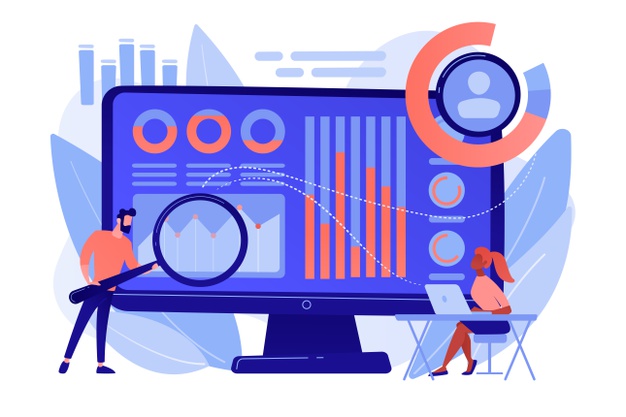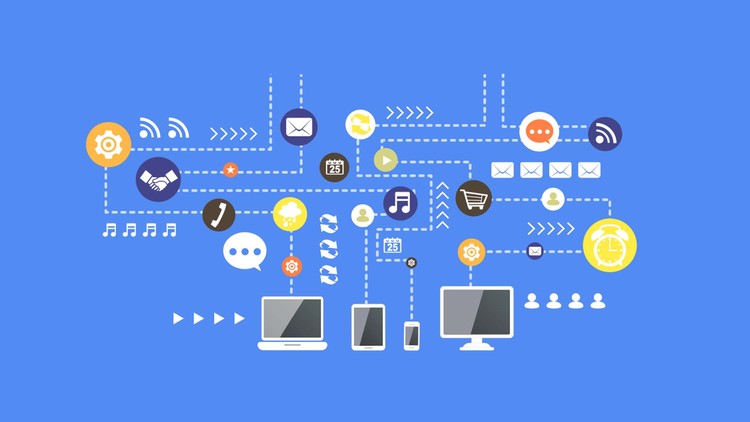
Data is an asset in today’s business world. No wonder almost all companies are aggregating it from as many sources as possible. The importance of Data and Data Management Tools is tremendous for the business community, and they have acknowledged it. To measure data against the right metrics and expected outcomes, data analytical tools are used extensively. Studies suggest that the revenue from data analytical tools increased by 50%, to around $187 billion in 2019. It is essential to leverage big data management tools and techniques, as it is proving vital for customer acquisition and competitive growth. As big data management tools collect, sort, and analyze data and thereafter provide information and predictions, it can be effectively used to predict future trends.

Why Data Analysis
- By analyzing data, you can get a clear picture of consumer preferences, competitive landscape, growth potential, and more.
- Free and open-source analytical big data management tools can be leveraged to enhance the company’s business at no extra cost.
Which Big Data Management Tools to Use?
By using data analytics big data management tools, you get to utilize a lot of built-in functions rather than having to design the same from scratch. It not only accelerates the value you derive from Big Data analytics, but you also get better quality insights in a quick time. Below are some of the widely used data analysis tools. We have tried to arrange these tools at each stage of the Big Data analytics process–this consists of ETL (data preparation), data analysis (actual number crunching), and data visualization (transforming numbers to actionable insights for business management). These tools can help your brand grow sharply at minimal or no expense:
In Data Analytics, ETL is a process in which Data is collated from the source system and transferred to a Data warehouse. It is the primary step in the Data analytics chain. The various big data management tools available for ETL are:
1) IBM Infosphere Information Server
It is a Data integration platform that consists of a family of products related to Data analytics. It has massive parallel processing (MPP) capabilities which can deliver a hugely scalable and flexible platform to process multiple varieties of Data volumes. Not only it helps to collect the data but it also has the ability to check the quality of the data. The tool has been widely used by businesses from the time it was introduced. A recent survey conducted by Gartner gave it 4.2 stars out of 5.
2) SAS Data Management
SAS Data Management is a program that helps to cleanse, monitor, transform, and secure data and also helps to improve the quality and reliability of the data. The tool helps to deploy, extract, transform, and load architecture to leverage native source and target platform capabilities. The platform provides 300 pre-built SQL-based transformations that have the ability to insert, merge, and delete data from different sources and targets.
3) PowerCenter Informatica
PowerCenter Informatica is an enterprise product from Informatica which provides a platform for Data integration. It is a fully scalable and high-performance product. Since it’s very accessible, it is quite popular among the Data Analytics community. Its ability to manage a broad range of data integration activities on one platform has made it vastly popular. Its ability to simplify the process of data marts and data warehouses is truly amazing. PowerCenter has also helped many companies to successfully collaborate the business aspect with the IT part. The main features of PowerCenter Informatica are:
- Data Masking
- Metadata management
- Seamless recovery
- Dynamic partitioning
Data Analytics Stage
The amazing ability of Big Data to dramatically enhance the customer experience and transform business models has made it one of the premier innovations of the current decade. For a company to use its data to the best advantage, it has to convert the data into knowledge. Data analytics tools come in to picture here. For example, manufacturing companies can monitor data coming from machine sensors and with the help of Data analytics, can modify the machine processes before a catastrophic event happens. After going through the importance of Big Data Analytics, here are some popular big data management tools which you can deploy in your systems:
4) Pentaho Business Analytics
By providing business data analytics in a single seamless platform, Pentaho tries to solve the various challenges around Data Integration. Pentaho can be the future of Data Analytics, as its open-sourced software is easily available and simple to use. Its embeddable platform can handle all requirements, including diverse and Big Data projects. Pentaho constantly innovates and adds new features to its modern and integrated platform. Pentaho was the first major vendor to introduce a big data analytics tool. Since then, it has always taken a leadership position in big data analytics. By taking advantage of its early entry and its continuous technological updates, Pentaho has been able to garner a big chunk of data analytics customers. With its simple yet powerful product, companies can save a lot of time in designing and deploying big data analytics solutions. Services across the spectrum including financial, retail and healthcare use Pentaho’s product.
5) Skytree Server
Skytree Server is an AI-based machine learning program that is intended to be a replacement for SQL databases. By taking unstructured sets of data and crunching them faster than any other traditional method, it has become quite popular among businesses. Its learning algorithms are used in multiple industries for a wide range of applications including sales, fraud detection, astronomy, etc. The predictive behavior of the tool is quite effective in forecasting future trends. The application automatically adjusts the algorithms needed through its machine learning technique. There is also a free trial version of the software made available by the company.
Data Visualization Stage
By placing the crunched data in a visual context, it becomes much easier for people to understand. This is the USP of Data visualization. By placing the information in a graphical format, the information is communicated clearly and efficiently. It is the final step on the Data analytics ladder. Some of the popular and important tools used for Data visualization are:
6) Tableau
Tableau is a data visualization tool that helps businesses to understand and comprehend data in a graphical format within a span of a few minutes. It’s simple to operate but has a quite robust architecture. Tableau helps businesses to create interactive and dynamic dashboards. By filtering out uninteresting data topics, a user can save plenty of time and resources. The two major products from Tableau company are Tableau Desktop and Tableau Server.
7) D3.js
D3 is a JavaScript library that helps in producing dynamic and interactive data visualizations in web browsers. D3 or Data-Driven Documents operates with the help of the widely used CSS and HTML5 standards. D3 takes full use of the modern browser’s abilities to throw stunning visuals. D3 emphasis on web standards allows businesses to avoid binding themselves to any proprietary network. D3 allows businesses to bind complex data to a Document Object Model (DOM) and then apply Big Data-Driven transformations to the document. By its efficient manipulation of the document based on data, D3 helps to resolve complex problems.
8) Highcharts
Highcharts is one of the most popular big data visualization products and is used by big brands like BBC, Twitter, IBM, Cisco, Facebook, etc and many more. Highcharts support various types of charts like spline, areaspline, bar, pie, column, and scatter charts. It works perfectly well with environments that do not support Flash (iOS tab devices) and has robust HTML5 compatibility. Its plot options is a great way to set the default ‘look and feel of a huge number of charts to be developed for different data. The best thing is that this default setting can be overridden with ease. Hence any customization to is easily achievable.
9) Microsoft Power BI
Microsoft’s Power BI can connect with organization-wide data sources and ensure simplified data preparation. It can carry out custom analytics and deliver rich, insightful, and stunning visual reports and dashboards. Features like Power Query (to connect diverse data sources), DAX and Merge transformation, and Power View (to create interactive charts, maps, and graphs) amplify the value you derive from Microsoft BI for data visualization. You can opt for the on-premise edition or the cloud version, depending on your specific business needs. 10) QlikView This offering from Qlik covers more than 40,000 customer accounts spanning more than 100 nations. Its neat and zero clutter interface provides rich capabilities not only in data visualization but also in BI and analytics. It also integrates well with its compatriot, Qliksense, for data discovery and data preparation. You can utilize its strong community support to improve the level and visual appeal of charting you can depict for your dataset.
Conclusion
Although Big Data may look quite a complex terminology from the outside, once you read a little about it you would know it’s not that hard and easily implementable. You don’t have to be a Data scientist to implement it in your businesses, just use the above data management tools can save the day for you. Are you utilizing any other Big Data Management tools that are offering substantial yields to your business? Do let us know through the comments section below.
Frequently Asked Questions
What tool is used for data management?
What are the 4 types of data management?
The four primary types of data management include:
-
Data Storage Management: This involves the proper storage of data in databases, data lakes, and data warehouses. Technologies like SQL databases, NoSQL databases, cloud storage solutions, and data warehousing platforms are commonly used. Effective data storage management ensures data is easily accessible, secure, and stored cost-effectively.
-
Data Integration: This type encompasses the processes used to combine data from different sources into a unified view. Tools and techniques for data integration include ETL (Extract, Transform, Load) processes, data integration platforms like Talend and Apache NiFi, and API integrations. Data integration ensures that disparate data sources are harmonized and available for analysis.
-
Data Quality Management: Ensuring the accuracy, completeness, reliability, and timeliness of data is critical. Data quality management involves processes like data cleansing, validation, and enrichment. Tools such as Informatica, Talend Data Quality, and IBM InfoSphere QualityStage help in maintaining high data quality standards, which are crucial for reliable analytics and decision-making.
-
Data Security and Governance: This type focuses on protecting data from unauthorized access and ensuring compliance with regulatory requirements. Data security involves encryption, access controls, and intrusion detection systems. Data governance includes policies, procedures, and standards for managing data. Tools like Varonis, Collibra, and Alation help organizations implement effective data security and governance strategies, ensuring that data is used ethically and legally.
These four types collectively ensure that data is stored efficiently, integrated seamlessly, maintained at high quality, and kept secure, enabling organizations to leverage data for strategic advantage.
What is the best tool for big data processing?
The best tool for big data processing depends on the specific requirements of your project, including the type of data, the complexity of analysis, the need for real-time processing, scalability, and the existing technological ecosystem. However, some of the most highly regarded tools for big data processing include:
- Apache Spark: Widely considered one of the best tools for big data processing, Apache Spark offers in-memory computing, which makes it extremely fast for processing large datasets. It supports batch and stream processing, making it versatile for various use cases. Spark also provides APIs for Java, Scala, Python, and R, which makes it accessible to a wide range of developers.
- Apache Hadoop: A foundational tool in the big data ecosystem, Hadoop is known for its ability to store and process massive amounts of data across distributed clusters. Its HDFS (Hadoop Distributed File System) and MapReduce programming model allow for scalable and fault-tolerant data processing. While Spark is often preferred for speed, Hadoop remains a robust choice for batch processing and storage.
- Apache Flink: An excellent choice for real-time stream processing, Apache Flink offers low-latency, high-throughput processing capabilities. It supports both batch and stream processing, providing flexibility and power for complex data analysis.
- Google BigQuery: A fully-managed, serverless data warehouse designed for large-scale data analytics. It allows users to run super-fast SQL queries on large datasets without the need for infrastructure management, making it highly convenient and efficient.
- Amazon Redshift: A fully managed data warehouse service in the cloud, Amazon Redshift is designed for large-scale data storage and analysis. It offers high performance for complex queries and integrates well with other AWS services, making it a strong choice for organizations using the AWS ecosystem.
- Snowflake: A cloud-based data warehousing solution known for its scalability, performance, and ease of use. Snowflake supports SQL queries and provides a highly scalable architecture that can handle varying workloads efficiently.
- Microsoft Azure Synapse Analytics: A comprehensive analytics service that brings together big data and data warehousing. It allows for powerful SQL-based analytics and integrates seamlessly with other Azure services, providing a unified analytics experience.
- Apache Kafka: Although primarily known as a distributed streaming platform, Kafka is also used for big data processing pipelines. It can handle high-throughput, real-time data feeds, making it ideal for applications that require real-time analytics.
Choosing the Best Tool: The “best” tool will depend on specific needs:
- For speed and versatility: Apache Spark.
- For real-time processing: Apache Flink or Apache Kafka.
- For cloud-native solutions: Google BigQuery, Amazon Redshift, or Snowflake.
- For robust, scalable batch processing: Apache Hadoop.
- For integrated cloud services: Microsoft Azure Synapse Analytics.
Consider the specific requirements of your project, including the nature of your data, desired processing speeds, existing infrastructure, and budget constraints when selecting the best tool for your big data processing needs.
What are the 4 types of big data technologies?
The four primary types of big data technologies encompass various tools and frameworks designed to handle different aspects of big data, from storage and processing to analysis and visualization. These categories include:
- Data Storage Technologies:
- Hadoop Distributed File System (HDFS): A scalable and fault-tolerant file storage system designed to store large volumes of data across multiple machines.
- NoSQL Databases: Such as Cassandra, MongoDB, and HBase, which are designed to store and retrieve large amounts of unstructured or semi-structured data.
- Data Lakes: Storage repositories like Amazon S3 and Azure Data Lake that hold vast amounts of raw data in its native format until needed for processing and analysis.
- Data Processing Technologies:
- Apache Spark: A powerful open-source processing engine that provides in-memory processing capabilities for speed and supports both batch and stream processing.
- Apache Hadoop MapReduce: A programming model for processing large datasets in a distributed environment by dividing tasks into smaller sub-tasks.
- Apache Flink: A stream processing framework known for its low-latency and high-throughput data processing capabilities.
- Data Analysis Technologies:
- Data Warehousing Solutions: Such as Amazon Redshift, Google BigQuery, and Snowflake, which provide scalable and efficient platforms for performing complex queries and analytics on large datasets.
- SQL-on-Hadoop Technologies: Including Apache Hive and Presto, which enable SQL-like querying capabilities on data stored in Hadoop ecosystems.
- Machine Learning Frameworks: Such as Apache Mahout, TensorFlow, and Spark MLlib, which provide tools and libraries for building and deploying machine learning models on big data.
- Data Visualization and BI Technologies:
- Tableau: A powerful data visualization tool that helps create interactive and shareable dashboards from big data.
- QlikView and Qlik Sense: Business intelligence tools that provide capabilities for data visualization, reporting, and analytics.
- Power BI: A business analytics service by Microsoft that provides interactive visualizations and business intelligence capabilities with an interface simple enough for end users to create their own reports and dashboards.
Summary:
- Data Storage: HDFS, NoSQL Databases, Data Lakes
- Data Processing: Apache Spark, Hadoop MapReduce, Apache Flink
- Data Analysis: Data Warehousing Solutions, SQL-on-Hadoop, Machine Learning Frameworks
- Data Visualization and BI: Tableau, QlikView/Qlik Sense, Power BI
These technologies collectively enable organizations to effectively store, process, analyze, and visualize large volumes of data, transforming raw data into actionable insights.



















